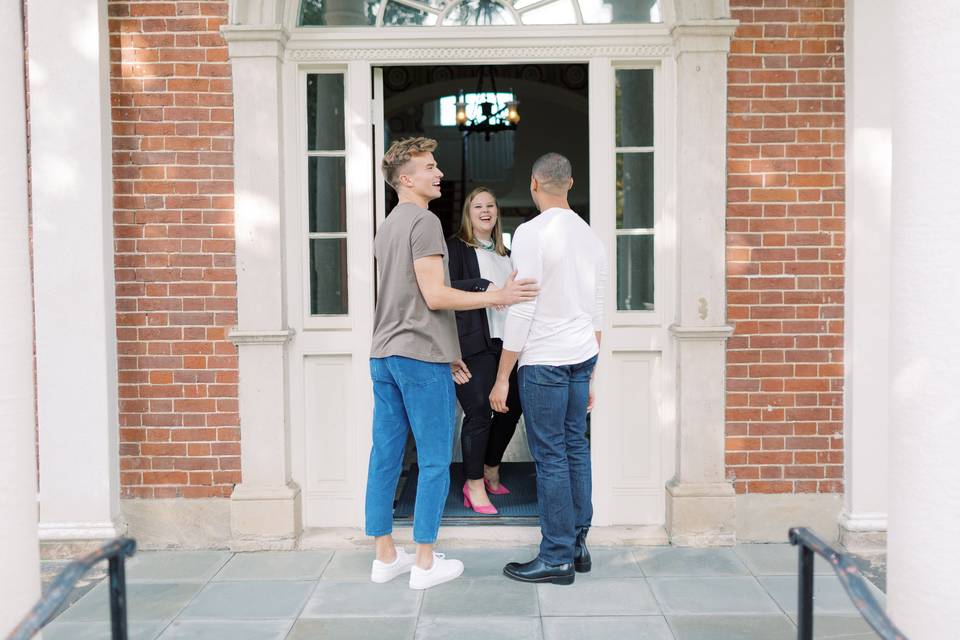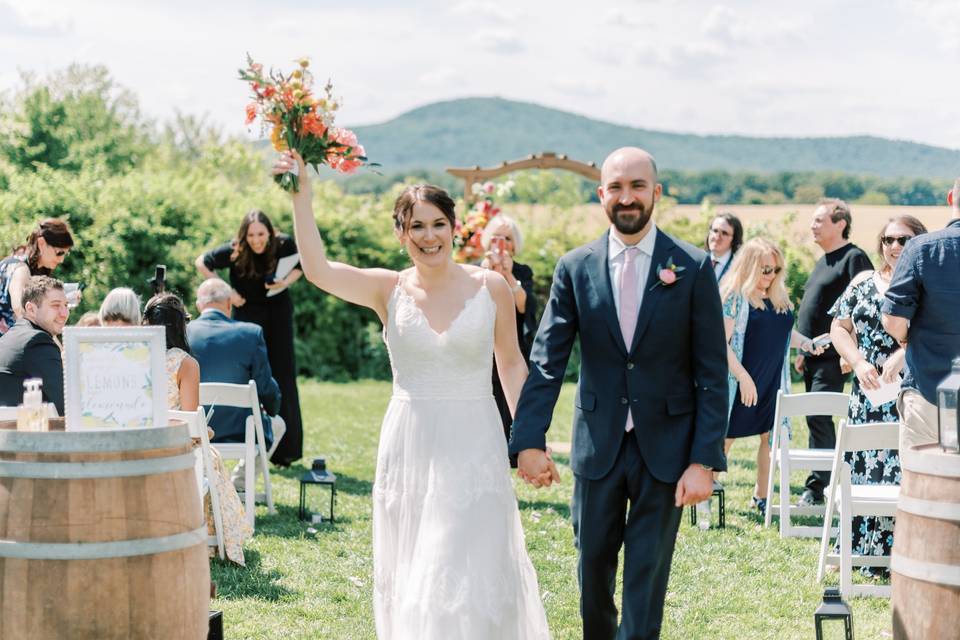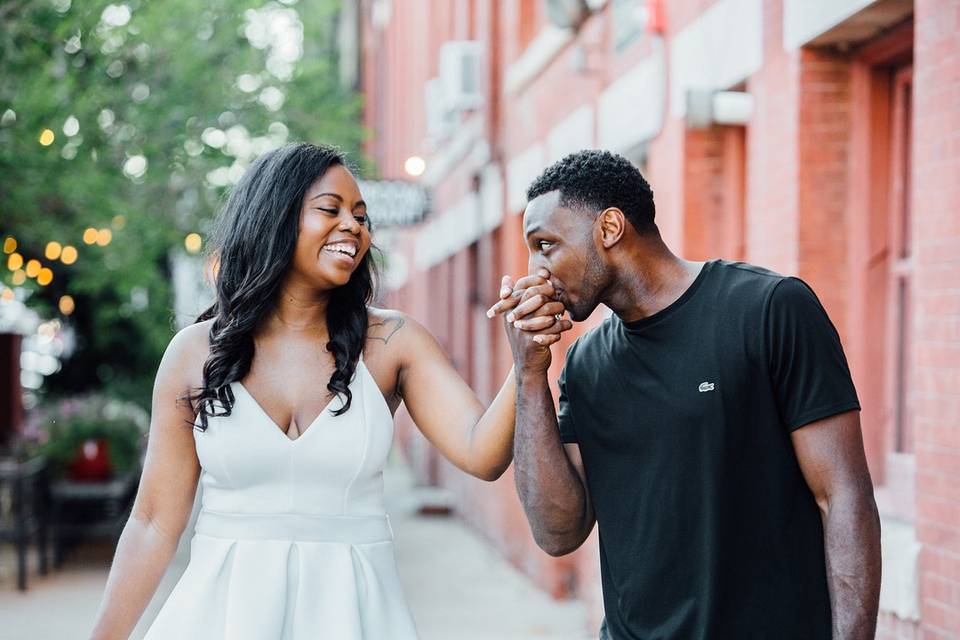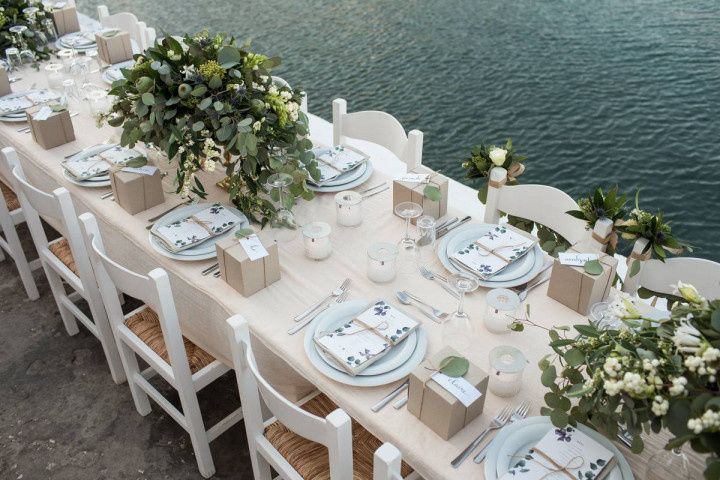The Riskiest Things You Can Do at a Wedding Right Now
Determining the risk of hosting or attending a wedding right now is tricky. This color-coded chart will make it easier to understand your options while keeping COVID-19 wedding safety in mind.
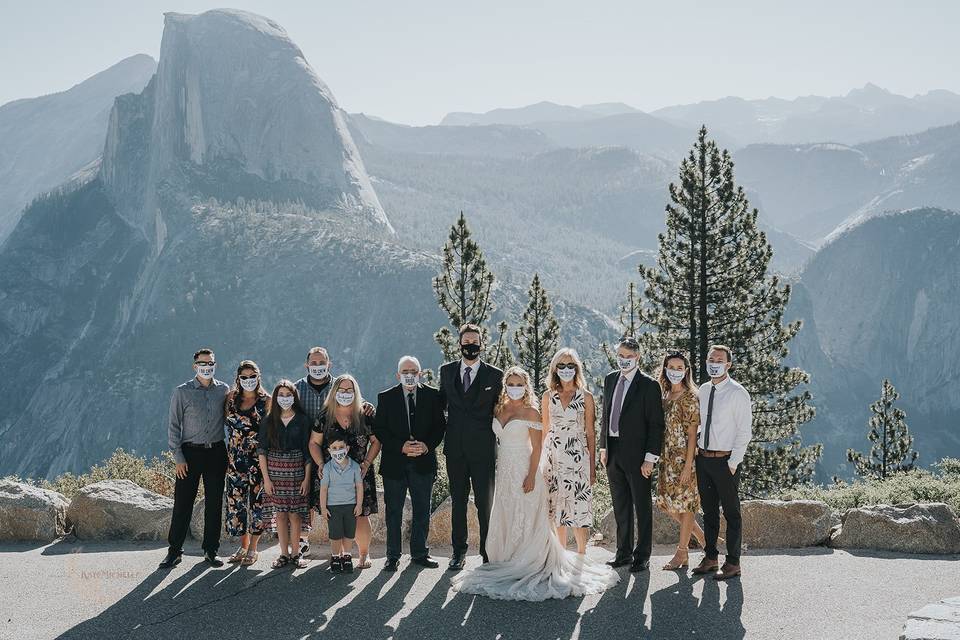
The spread of COVID-19 has forced us all to think twice about the types of activities we participate in, but weddings are a particularly confusing (and emotional) subject. While large gatherings might be out of the question for now, smaller weddings and elopements are still on the table, as long as you’re following the appropriate state and CDC guidelines. To help you visualize the most dangerous wedding activities amid COVID-19, we created a color-coded chart ranking them from lowest to highest risk of infection.
Here are the riskiest things you can do at a wedding right now—and the precautions you can take to keep everyone safe.
Low risk
- Virtual weddings with no in-person guests: For the lowest possible risk, take your celebration online by hosting a virtual wedding.
- A socially distant outdoor portrait session with your photographer: Choose a location that is not heavily trafficked and gives you room to spread out.
- Serving individually packaged meals at a reception of less than 10 guests: Buffets and self-serve food stations should be avoided.
- An outdoor standing ceremony with fewer than 10 guests who are wearing masks and social distancing: Guests should gather in their household groups only and stand at least six feet apart.
- Drive-by weddings and pre-wedding parties: Celebrate safely from a distance by standing outside and waving as loved ones swing by in their cars.
Moderate to low risk
- Weddings with fewer than 10 guests who are wearing masks and social distancing: Guests who are not in the same household should stand at least six feet apart. Designate a special area for at-risk individuals to safely distance themselves from the rest of the group.
- Seating guests by household or quarantine pod: Limit possible risk of infection by keeping guests together based on who they currently live with.
- Driving to a rental home for your wedding or honeymoon: Check face mask requirements, avoid lengthy stops in public along the way, and bring plenty of hand sanitizer for your road trip.
Moderate risk
- Outdoor weddings of up to 20 guests who are wearing masks and social distancing: Risk will increase based on the number of guests invited. Follow your state guidelines for limitations on gathering size.
- Communal card boxes and gift tables: Provide ample hand sanitizer and consider adding floor markings to direct guests safely around the table.
- Escort cards or other displays that cause guests to gather: Share table seating assignments prior to the wedding to limit guest interaction.
Moderate to high risk
- Weddings with 50-100 guests: In many states, gatherings of more than 50 people are not currently permitted, especially indoors. Follow your state's guidelines on gathering size, indoor vs. outdoor venues, and face mask requirements.
- Serving passed hors d'oeuvres while keeping guests spread out by household: To prevent guests from crowding around food displays or wait staff, serve hors d'oeuvres and appetizers at seated tables instead.
- A weekend-long bachelor/ette party with outdoor activities and no air travel: Risk will increase if attendees are flying or traveling from out of state. Avoid high-risk activities, such as going to bars, amusement parks, nail salons, or other crowded areas.
- Spending a day at the spa: Private, in-home hair and makeup services are an alternate option if you're in search of pre-wedding pampering. Ask your beauty pro about their hygiene and safety practices.
High risk
Please note that these activities all involve close contact and risk level does not decrease with outdoor weddings.
- Weddings with hundreds of guests: Remember that many wedding venues across the country have reduced their guest capacity to 50 percent or less due to state requirements.
- Inviting elderly or at-risk people to your wedding: When possible, guests in vulnerable categories should avoid in-person events.
- Traveling by plane to your wedding or honeymoon: If you must travel by air, wear a mask and wash your hands frequently.
- A photo booth with props and/or touch screen: Skip the props and hire a photo booth vendor who will operate the booth on guests' behalf from a distance.
- Buffet-style reception: Instead, opt for individually plated meals that are brought directly to guests.
- Communal dessert tables: Serve pre-boxed cupcakes or slices of wedding cake to decrease the risk of contamination.
- Self-serve drink stations: Take the opportunity to get creative with your wedding cocktails, such as spiked juice pouches or bottled beverages.
- Packed dance floor: Consider other entertainment options that allow social distancing, like a live dance performance or fireworks show.
- Receiving line with hugging and kissing: Air hugs and kisses from six feet away only.
- Seating guests with others not in their household: This is the best way to keep everyone safe—and it's totally okay to have uneven table assignments.
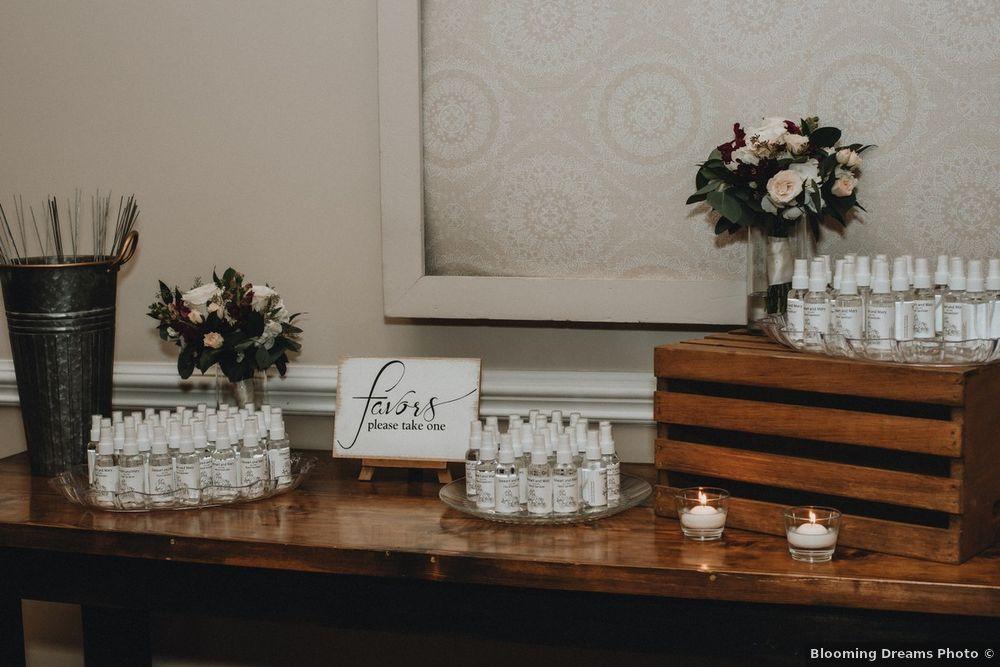
What are the riskiest wedding-related activities during the spread of COVID-19?
It's important to remember that activities requiring any interaction with others aren't entirely risk-free at the moment, but there are certain things that can put you at a greater risk of infection and should generally be avoided.
“Four main risk factors to consider for any event are enclosed spaces, duration of interactions, density of people/challenges for social distancing, and risks of sneezing/coughing/aerosol generation (i.e. not wearing masks),” says Erin Sorrell, virologist and Assistant Professor at Georgetown University. Air travel and any indoor activities that cause people to be in close contact, such as bars and crowded dance floors, should also be avoided, she says.
On the other hand, Sorrell says that first dances and parent dances—as long as your parents aren’t considered vulnerable individuals—pose lower risk levels, since you’re likely already in regular contact with those people and can easily distance yourself from other guests.
Is it actually safe to host or attend a wedding amid COVID-19, even in states that currently allow public gatherings?
Before planning or attending an event, you should always defer to your local guidelines and regulations. Remember that some states require visitors from other regions to self-quarantine upon arrival, and that there could be limitations on the number of guests allowed or the types of wedding venues available.
“Risk is not uniform across the U.S.,” says Sorrell. “The higher the level of community transmission in an area, the higher the risk is that COVID-19 could spread during a gathering.” In addition to hosting your wedding outdoors and enforcing social distancing, she recommends providing hand sanitizer and face masks for guests, and asking anyone who is not feeling well to stay home (with the option for them to join remotely instead).
What precautions should you take before hosting or attending a wedding during the pandemic?
Whether you’re the wedding host or simply a guest, Sorrell recommends that you take a risk-based approach no matter what.
“As the number of people an individual interacts with at an event increases, and the length of those interactions increase, the potential risk of becoming infected with COVID-19 increases,” she says. In other words: Even though it’s not ideal for celebrating, wedding guests should avoid extended conversations and close contact with others who are not in their household.
If you’re hosting the wedding, it’s your responsibility to ensure that the celebration is as safe as possible for friends and family—that means reminding guests of social distancing precautions, providing masks and hand sanitizer, and choosing a location with easy access to restrooms for hand-washing.
“Communicate early and often your plans for your guests,” she says. “Make sure they understand why you are asking them to take certain precautions, and remind them before and even during the celebration to ensure the precautions you set out are followed.” Guests should regularly check the couple’s wedding website for event guidelines and updates.
COVID-19 Wedding Safety Chart
While risk level varies by location and wedding size, this color-coded chart is an easy way to keep track of the wedding-related activities that are relatively safe, and those that should be avoided.
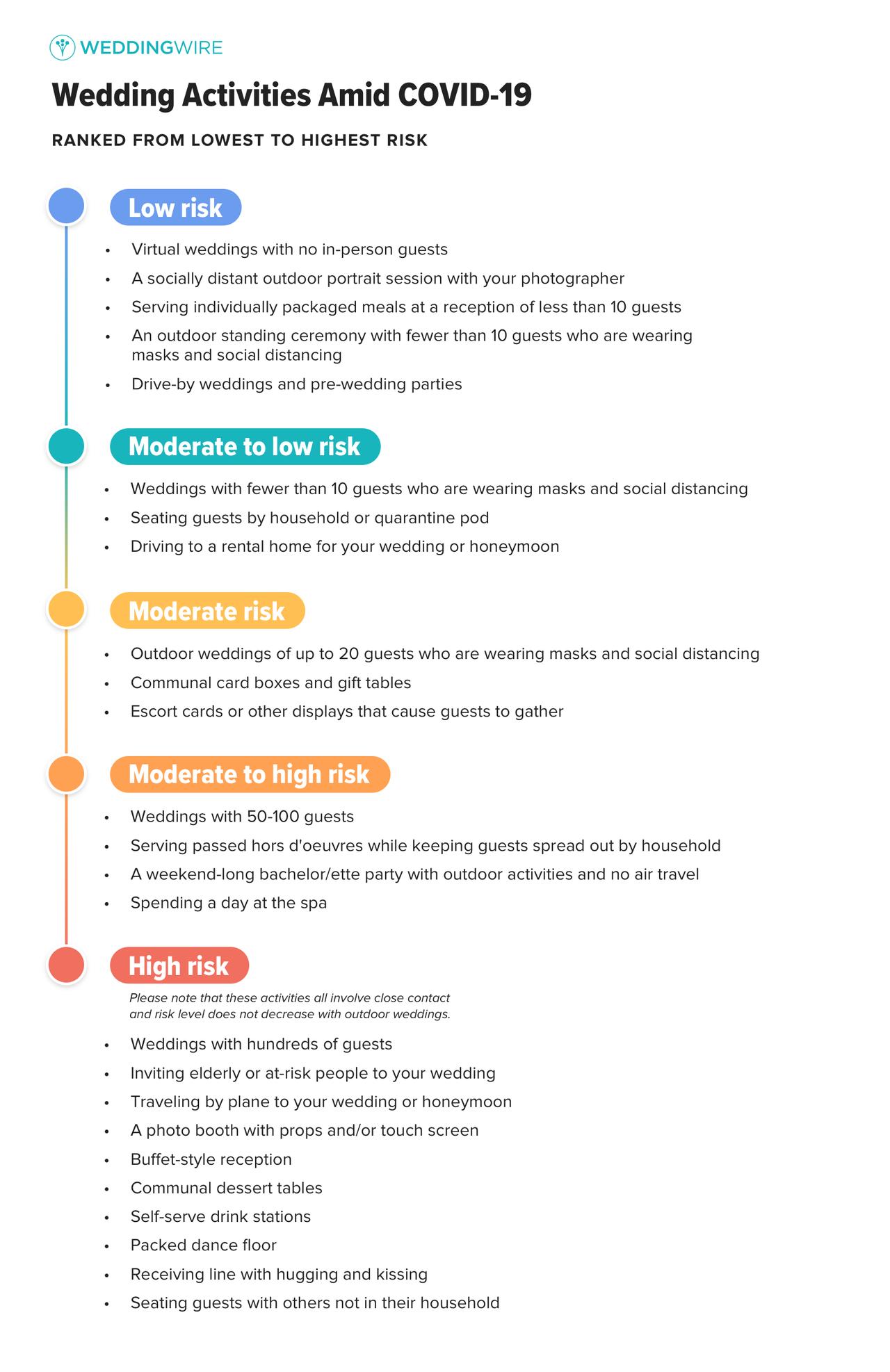
References: Erin Sorrell, PhD, Director & Assistant Professor, Biohazardous Threat Agents and Emerging Infectious Disease Program, Georgetown University; Texas Medical Association; Centers for Disease Control and Prevention

